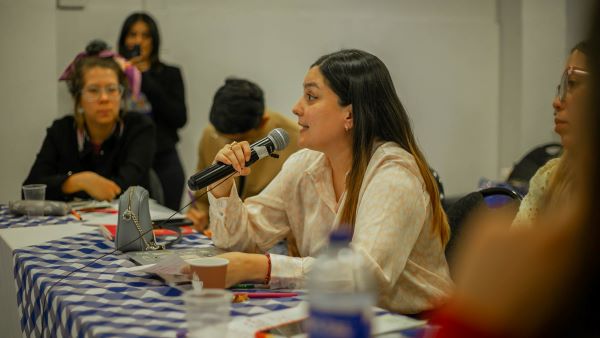I was lucky enough to host a panel for the Association of Public Hospital Districts, which was held as part of the Washington State Hospital Association meeting. This was an outstanding panel of people who are extraordinarily pressed for time, and still prioritize public education and engagement. Healthcare is a uniquely challenging industry, but many PHD challenges are common across other small government agencies, so the conversation seemed worth sharing.
Although it sounds a little idealistic in this cynical age, I went to college for political science and journalism because I’m highly interested in how groups of people make decisions together. This is the fundamental challenge of every form of government, including my favorite form: democracy.
Like all relationships, the relationship between local governments and their communities is based on good communication and trust. Similarly, having good communication takes time and attention, which can be hard to prioritize when daily life is chaotic.
In this age of digital communication and rapid information exchange, smaller public agencies can feel overwhelmed by what it takes to get on the information superhighway. The Internet and social media are awash with stories, all jockeying for our attention, and it can be intimidating to know how to get in front of the people who matter the most to you and not get lost in the noise.
And yet, if a public agency is not in constant dialogue with the people it serves—both informing and listening— it will be dramatically less effective.
I’ve worked over decades to improve public communication for cities, publicly owned utilities, ports and of course, public hospital districts. They all have common challenges, regardless of function:
- Not enough people to do the work;
- Without a clear idea of the short-and long-term benefits, there difficulty in prioritizing communication and community-engagement work;
- Even when valued, there’s usually not enough people to do it;
- Digital and media landscape is evolving fast; and
- The public itself is always changing.
An added ripple: PHDs with hospitals may also be competing against other hospitals, and must manage the requirements of open meetings, public documents and constraints on advertising.
This post summarizes just some of the wisdom of these PHD leaders:
- Elise Cutter, Island Health CEO
- Alison Weigley, Pullman Regional Hospital Director of External Relations
- Jen Carter, Snoqualmie Valley Health Commissioner
Botox! Communication is Two-Directions
Too often, people think of communication work as happening in one direction: from the agency to the public. If your comms efforts are only about telling the people what you think the should know, you’re doing it wrong.
Communications and community relations are always, always, always about information flowing back and forth between the agency and the public it serves. The more effectively it flows, the better off everyone is.
Jen Carter, an elected commissioner for Snoqualmie Valley Health, lives daily as an ambassador for the hospital and wears a name badge that clearly identifies her as a hospital commissioner. When she’s out in the community, she’s telling people about what’s happening at the hospital; she’s also listening to their interests and needs, and then she’s cycling them back to Renée Jensen, the hospital’s CEO. Based on this flow of intel, they realized that local residents were spending money outside the district for Botox services. By adding the service locally, they met a need, reduced residents’ transportation time, and created a revenue stream that helps supports charity care and other health services.
Who you going to call? Communication is Personal
When Elise Cutter became CEO of Island Health, she did a very purposeful job of getting out and getting to know people in the community. She went to community meetings of all sizes, handed out her direct email and phone number, and carved out regular time on her calendar to continue to connect, in person, with people.
She noted that when people know the CEO of the local hospital, they’re more inclined to feel ownership over it. Being present and available in various settings allows for community issues to be raised directly and addressed promptly.
Building relationships is not solely the job of the CEO. Elected board members and commissioners are also valuable conduits to other organization or community groups, as are staff at all levels. Serving the community requires that hospital and public agencies have strong, personal relationships with agencies and nonprofits, or everyone fails.
Think that’s dramatic? I’ve met with hospital CEOs who didn’t know the name or responsibilities of their county’s public health officer… until March of 2020. The health officers were churning out health orders that had immediate effects on hospital operations, and they didn’t know each other’s names. I haven’t seen data, but I’d be willing to bet that in counties where public health and clinical health leaders had each other’s cell phone numbers, there was more effective coordination around masks, vaccine distribution, and quarantines, and thus more lives saved.
76 Percent: Communication is Quantifiable
Although communication and community relations departments are often the first to be affected by layoffs and financial downswings, they shouldn’t be. Those layoffs often happen because leadership fails to understand both the immediate value of the communication work in the long-term necessity of it.
Alison Weigley of Pullman Regional Hospital spoke about their process of identifying clear goals and establishing data-driven benchmarks to evaluate both process and outcomes.
Preparing for a ballot measure is a great motivator for an agency. Fire, police, roads, schools, health care all need to go in front of the voters periodically, and that’s a really good thing. It’s not just about providing good service: it’s about making sure people know you’re providing good service.
I love a ballot measure to kick a comms effort into gear. It’s a great measure of how well the public knows you and what they think of you. But other communication goals can be around services, facilities, future planning, affiliations and management changes and more.
As a result of the good work done by Alison and the leadership of Pullman Regional Hospital, they passed their ballot measure by 76 percent. This is an extraordinary approval metric and is simply impossible without investing the time to ensure the public knows the problem you’re facing, understands the solution, and trusts you to get the job done.
Trust is built over time, with honesty, transparency and consistency. Paid digital media is great to have—it can quickly reach a lot of people with simple, straightforward information. But building trust requires personal relationships. Even without an additional budget line item, public agencies can utilize executives, elected officials and staff in talking with the community.
Everything Old Is New Again
We called this session “everything old is new again” because in this big world of global communication, our human preferences become more, not less, obvious: We want information from people we know and trust. We trust people who show up.
CEO, commissioners, clinical and administrative staff are more influential in your community then Mark Zuckerburg every day of the week—when the community knows you. Don’t let all that influence go unused. With thoughtfulness, intentionality, clear goals and consistent messages, public agencies have the resources they need to successfully serve their communities.


